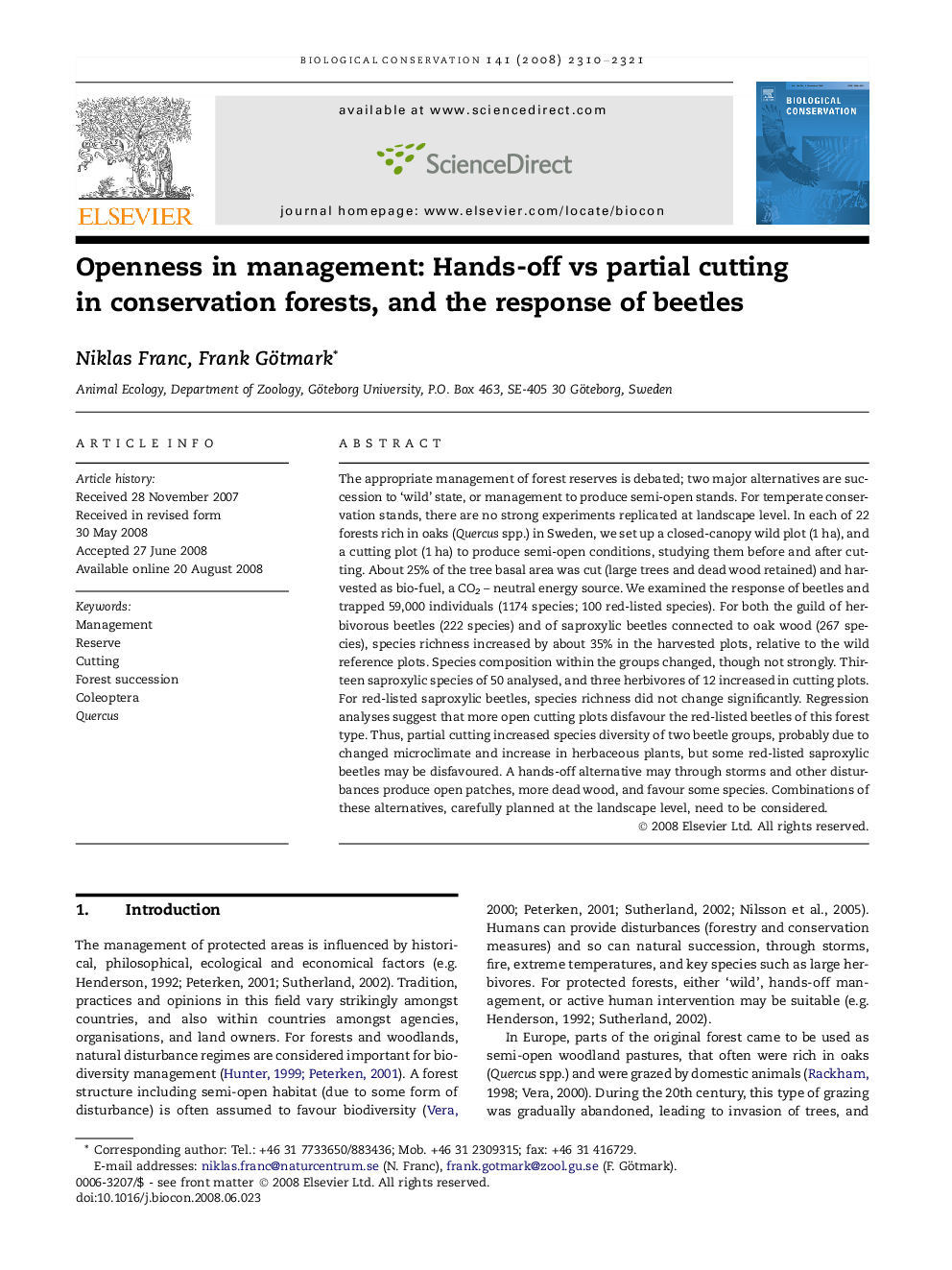| Article ID | Journal | Published Year | Pages | File Type |
|---|---|---|---|---|
| 4386818 | Biological Conservation | 2008 | 12 Pages |
The appropriate management of forest reserves is debated; two major alternatives are succession to ‘wild’ state, or management to produce semi-open stands. For temperate conservation stands, there are no strong experiments replicated at landscape level. In each of 22 forests rich in oaks (Quercus spp.) in Sweden, we set up a closed-canopy wild plot (1 ha), and a cutting plot (1 ha) to produce semi-open conditions, studying them before and after cutting. About 25% of the tree basal area was cut (large trees and dead wood retained) and harvested as bio-fuel, a CO2 – neutral energy source. We examined the response of beetles and trapped 59,000 individuals (1174 species; 100 red-listed species). For both the guild of herbivorous beetles (222 species) and of saproxylic beetles connected to oak wood (267 species), species richness increased by about 35% in the harvested plots, relative to the wild reference plots. Species composition within the groups changed, though not strongly. Thirteen saproxylic species of 50 analysed, and three herbivores of 12 increased in cutting plots. For red-listed saproxylic beetles, species richness did not change significantly. Regression analyses suggest that more open cutting plots disfavour the red-listed beetles of this forest type. Thus, partial cutting increased species diversity of two beetle groups, probably due to changed microclimate and increase in herbaceous plants, but some red-listed saproxylic beetles may be disfavoured. A hands-off alternative may through storms and other disturbances produce open patches, more dead wood, and favour some species. Combinations of these alternatives, carefully planned at the landscape level, need to be considered.
